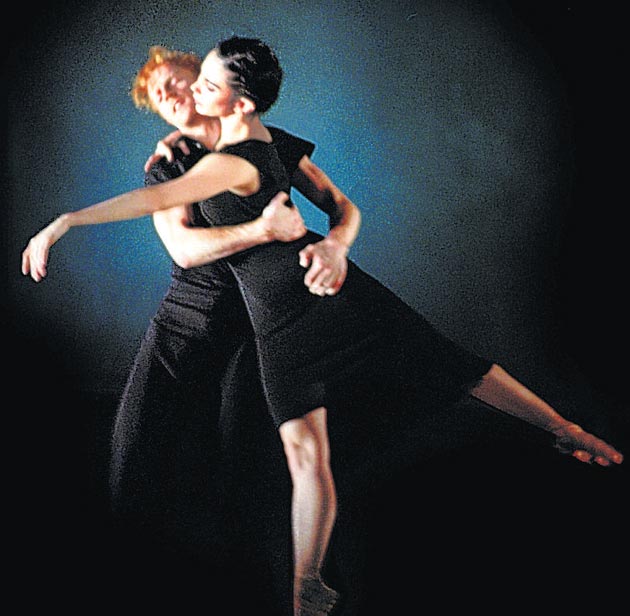Dance in 2009: Diaghilev would have been proud – and then mortified

The Best and Worst of Times
Some years, the good, the bad and the ugly separate neatly into different nooks in the memory. The last twelvemonth in dance, though, has been a real old mishmash of marvels and mire, sometimes in the same evening.
Sadler's Wells's adventurous programme In the Spirit of Diaghilev was a case in point, containing, as it did, one of the year's best new works and also its worst – so offensively bad that BBC4 excised it from a recent broadcast. It wasn't just that Eternal Damnation to Sancho and Sanchez "contained material unsuitable for pre-watershed viewing" (with its onanising pope, pregnant nuns and garrotting, you bet it did). It was that the choreographer, Javier de Frutos, sacked as director of Phoenix Dance, had used the Sadler's Wells commission to make spiteful attacks on former colleagues. Diaghilev, notoriously petulant, might have done the same. But that doesn't justify the folly.
Gloriously, the same evening produced Faun, a startling re-imagining of Nijinsky's L'après-midi ... by Belgian ideas man Sidi Larbi Cherkaoui (take the trouble to memorise that name). Tumbling, boneless, vulnerable as a new-born calf, his Play-doh-bodied man-goat captured the kind of innocence the first human must have had. The dancer James O'Hara was an important discovery, too.
Most Overhyped Flop
Feverish hardly describes the anticipation of Sylvie Guillem's collaboration with theatre's chippest of blue-chip international talents, Robert Lepage. Alas Eonnagata, though pretty, proved a thin conflation of historical fact and conjecture about a French chevalier of uncertain gender. Though there were kicks to be had in seeing the gamine Sylvie disport herself in a bulging codpiece, the awfulness of hearing dancers declaim rhymed couplets and seeing the lovely Russell Maliphant trussed into a dress made Eonnagata the nadir of the season.
Most Underhyped Success
True unalloyed pleasure arrived discreetly, as it often does. Kim Brandstrup's Goldberg ran for only a few nights at the Linbury Studio, but it could have sold out 10 times over on the word-of-mouth buzz. The scheme couldn't have been simpler: a pianist, downstage, played Bach's Goldberg Variations, all 30 of them, from earthy to sublime, while upstage a bunch of dancers – including the wonderful Tamara Rojo and a hip-hopper – lived out, in condensed form, several days' rehearsal on a new ballet: this one, complete with tiffs, boredom, spurts of inspiration and flights of pique, as well as deep romantic intrigue. Who was the mysterious boy by the piano who wouldn't dance? Why, when he did, and with Rojo, did Steven McRae seem so troubled and brittle ? A better title for the piece might have been "The Page Turner". Again, please.
Brightest Idea
All efforts to "improve access", as the jargon goes, can only be good, and the growing trend for showing selected Royal Ballet performances – for free – on open-air screens is to be cheered. A less weather-dependent initiative launched only last week when the Paris-based production house Ciel-Ecran beamed a Paris Opera Ballet performance direct into 31 British cinemas, from Aberdeen to Brighton, Prestatyn to Lincoln. The single snag is that curtain-up – owing to the hour time difference – is an awkward 6.30pm. No doubt we could get used to it.
Final Bows
Two of the dance greats left this earth in July. Pina Bausch, 68, died apparently only five days after a cancer diagnosis. The German-born choreographer, a lifelong investigator of the human condition through Tanztheater – her much-imitated fusion of radical theatre, gender stand-off and danced body language – was not the sort to make a song and dance about her own demise. What exercised her, more likely, was that her company, Tanztheater Wuppertal, was in the best possible shape to continue the work she started 37 years ago. It was, and it will.
The death three weeks later of Merce Cunningham, grandaddy of modernism and Manhattan's nattiest Doc Martens-wearer, shouldn't have come as such a shock, given his age. But at 90, Cunningham had shown no sign of giving up work. Choreography, he once told a journalist, "is like knitting – you don't just stop".
Subscribe to Independent Premium to bookmark this article
Want to bookmark your favourite articles and stories to read or reference later? Start your Independent Premium subscription today.

Join our commenting forum
Join thought-provoking conversations, follow other Independent readers and see their replies